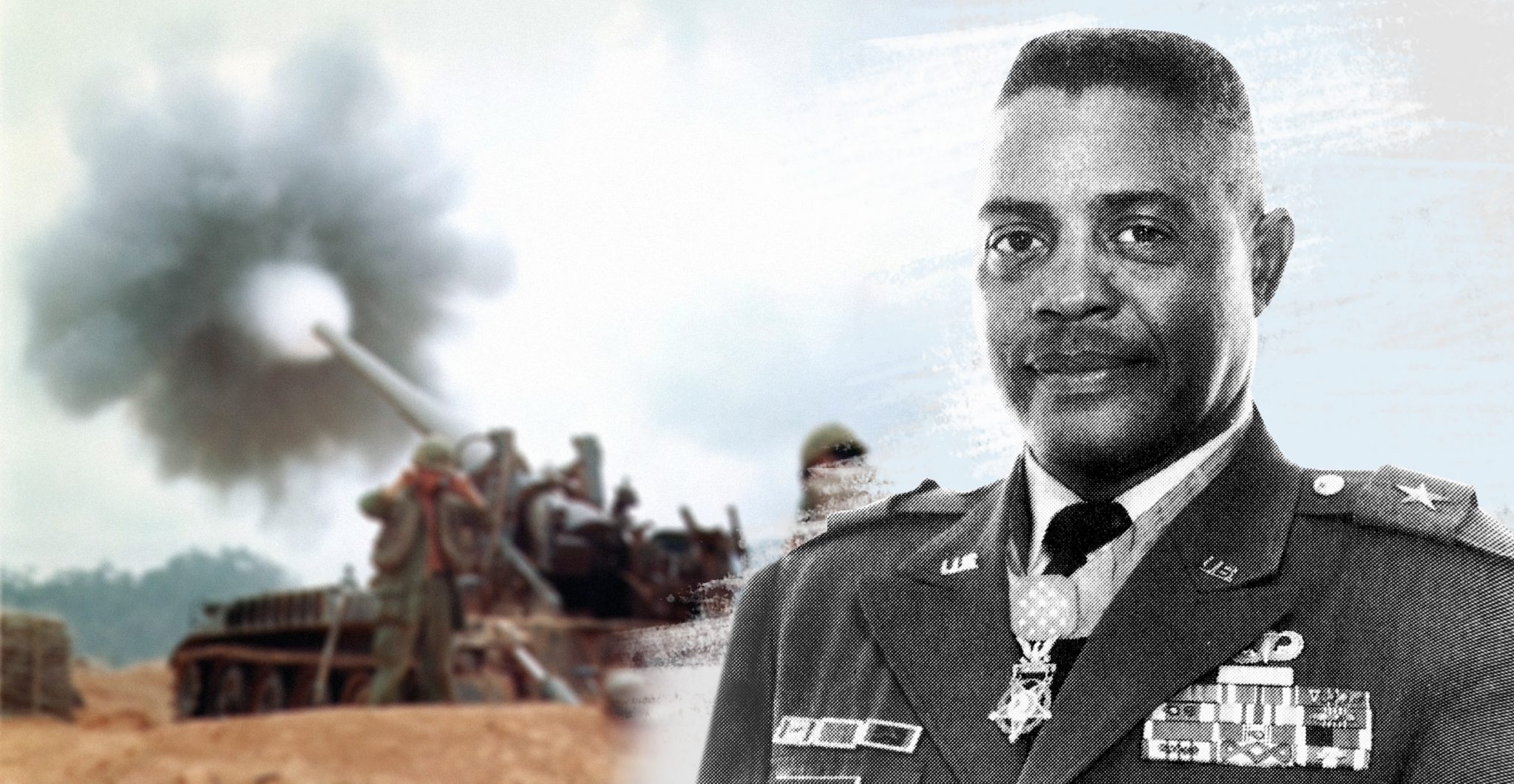Ghouls and goblins run through the streets of America every Halloween. On October 31, 1968, they ran through the jungles of Vietnam. Many of the young men in Vietnam, only a year removed from high school, had brothers and sisters that would be knocking on doors.
Some of the soldiers would be going to sleep, fondly remembering their days of trick-or-treating, wishing they were back home to watch the children dash about on sugar rushes. The soldiers manning Fire Base Rita were about to experience the most harrowing Halloween of their young lives.
The Tet Offensive was long over by the Fall of 1968. This meant that the regular North Vietnamese Forces had to step up their infiltration of South Vietnam to take the place of the decimated Viet Cong in the interminable war raging in South East Asia.
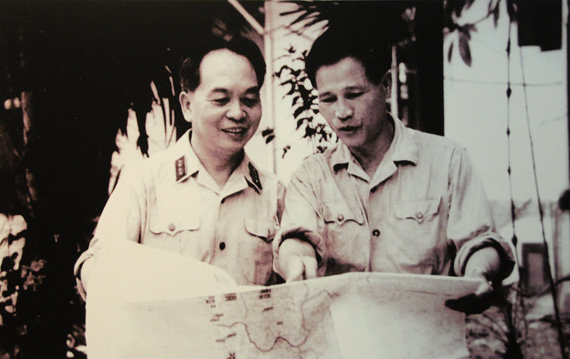
One of the avenues for infiltration was in the Fishhook, a small sliver of South Vietnam that protruded into Cambodia.
The United States Army had recently built Fire Support Base Rita in this area to control and destroy enemy movement. The firebase used 105 and 155mm howitzers against the infiltrating NVA forces.
Rita was a constant threat to the movement of the NVA. From their point of view, it had to go.
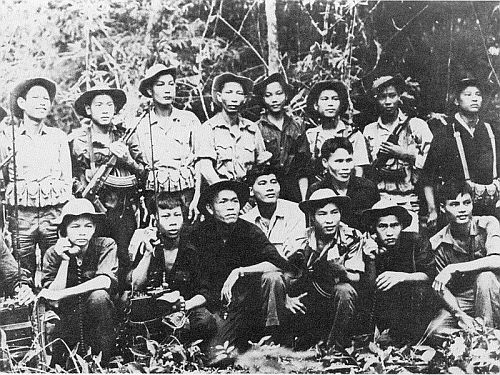
The Siege of Firebase Rita
External security for the firebase was provided by the armored cavalrymen of Bravo Troop, 1st Squadron, 4th Cavalry. These troopers had tanks and armored personnel carriers impervious to small arms fire.
Unfortunately, rocket-propelled grenades could punch through the thin armor of the APCs and had often done so as they patrolled the jungles outside the wire.
Internal security was provided by the red-legs of Charlie Battery, 8th Battalion, 6th Artillery Regiment and by 1st Bn, 5th Artillery. Patrols outside the wire were often ambushed while the garrison inside the wire was subject to daily mortar and rocket attacks.
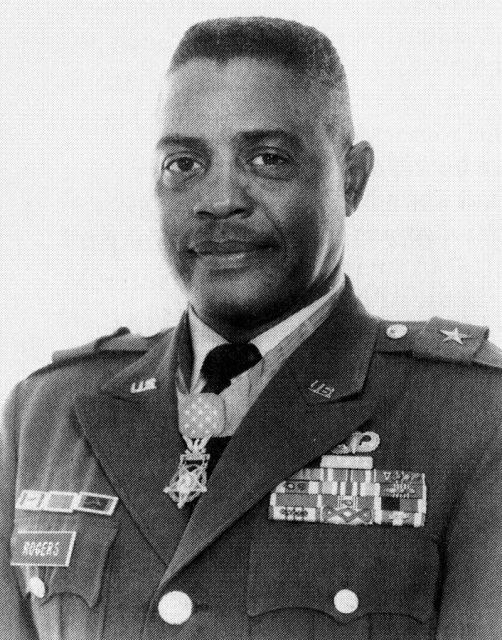
Lieutenant Colonel Charles Calvin Rogers, commander of the 1st Bn, 5th Artillery, was at Fire Base Rita on Halloween to let his beleaguered artillerymen know they had not been forgotten. In addition, his helicopter had brought mail and candy – it is hard to say which was more welcome.
LTC Rogers was a career artilleryman and considered command of the 1/5 Artillery as the pinnacle of his career. His battalion was not only the oldest artillery unit of the U.S. Army but also the oldest continuously active unit in the entire Army.
He was scheduled to depart for a staff assignment in two weeks. This Halloween trip served as his farewell visit as well as a morale boost.
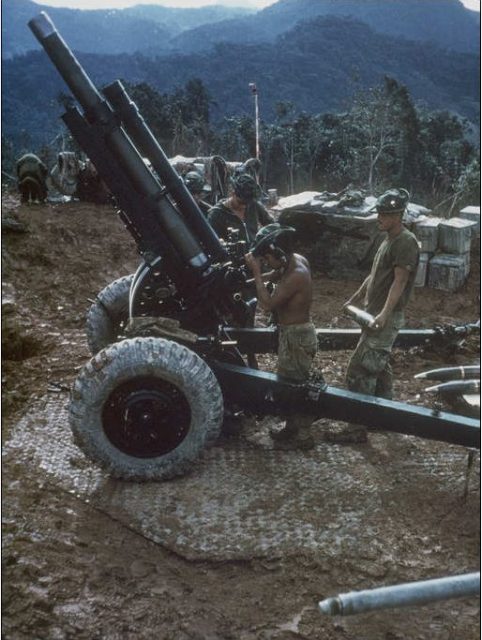
To keep the goblins and ghouls dressed in NVA khaki from getting too comfortable, the troopers on the line would fire “mad minutes” during which time every weapon was fired for a full minute into the surrounding jungle. Implemented at random times, mad minute attacks were used to keep the enemy from moving freely in the night.
This time, the NVA were prepared. Sappers had infiltrated to within meters of the concertina lined defenses, mortars and machine guns had been set in, and 800 infantry had stealthily made their way into attack positions. Lying in prepared positions and hastily dug spider holes, the disciplined communist forces from the north waited patiently.
At 3 a.m. their patience was rewarded as the frustrated soldiers in Firebase Rita let their aggression out in one minute of wild firing chaos. Silence reigned briefly as the minute ended.
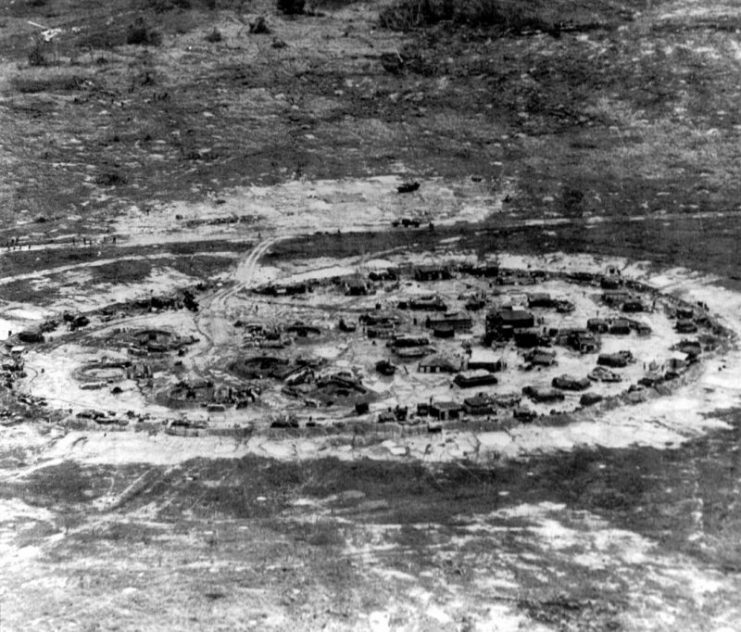
In the quiet of the surrounding jungle, the distinct thump of mortars was heard. There was the tinny sound of bugles blaring, after which dozens of rockets and RPGs lanced through the night into defensive positions.
With shrapnel zinging through the air and soldiers needing to reload their weapons, the order was given for all cavalry troops to “button up” inside their armored vehicles in prepared positions along the line. The cannoneers with the self-propelled 155s did the same.
More tinny bugle blasts sounded and sappers began running towards lines which were suddenly empty of defenders. Heaving satchel charges and pushing Bangalore torpedoes under the wire, these suicidal demolition men cleared the way for the massed infantry to exploit the gaps.
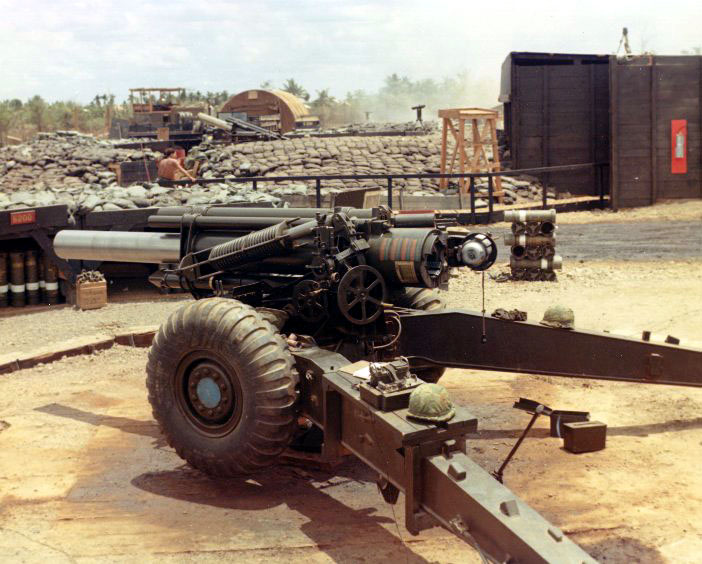
Zero Degrees – Direct Fire!
Watching it all was West Virginia native, LTC Rogers. Visible in the dim light and by the sudden flashes of explosives, he could see the enemy at the wire, and he saw that all the cavalry vehicles on the line to the west had been hit. The only thing that could stop the enemy now was the guns of B, 1/5 Artillery.
The enemy had come knocking, and it was up to his men to answer the door.
Running towards the Bravo Battery bunkers, he roused his soldiers. He pushed, cajoled and cursed as he led them to their guns. As his men manned their 105s, the nightmare of all artillerymen was coming true – guns to Zero degrees! Horizontal fire.
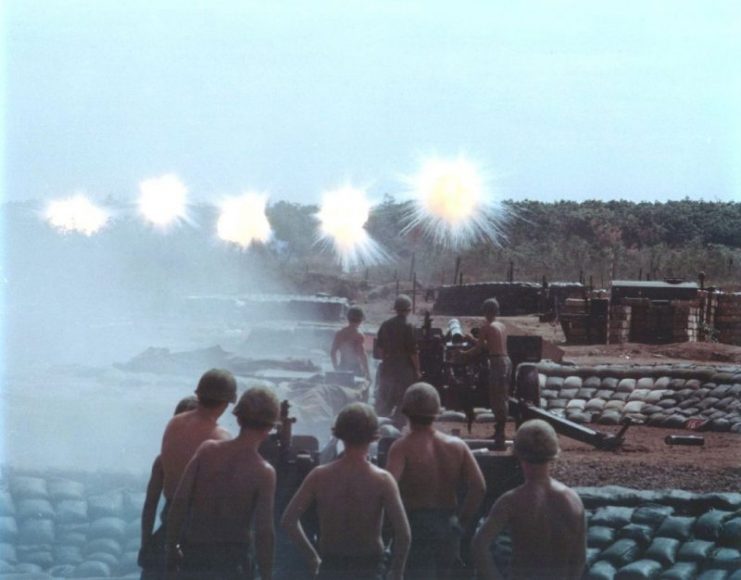
The cannoneers were not firing in support of others, they were not firing at targets beyond their sight. The guns were aimed for direct fire at the hordes of khaki-clad figures surging into the perimeter. The cannoneers were firing for their lives.
Amid nightmarish activity, Rogers helped position the guns then alternately barked out fire commands to the guns and directions to the Air Force “Spooky” gunships coming online above. A nearby explosion knocked him down and filled him with shrapnel, but he sprang back into action and continued giving orders.
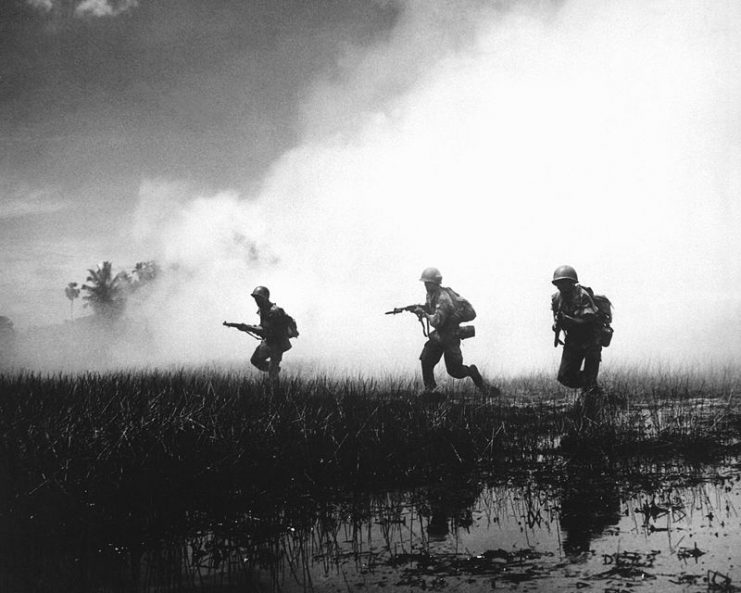
Warned that enemy infantry had penetrated and was attacking the buttoned-up self-propelled artillery, Rogers gathered an ad hoc assault force and charged to the adjoining positions which were threatened with annihilation.
Despite being hit again, Rogers cleared the enemy from the guns, adding his rifle fire to that of his men. Helping to strengthen the defensive positions, Rogers was called off to respond to a new attack. Once again, leading from the front, he viciously assaulted the surging enemy with his artillerymen-turned-infantry.
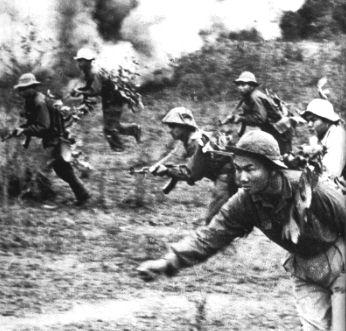
Man the Ramparts!
After the second human wave attack was beaten back, Rogers moved around the area. He encouraged the men and insisted they strengthen their positions.
Near dawn, a third and final human wave attack came rolling in as the desperate enemy tried to destroy the haggard defenders of Firebase Rita.
Rogers calmly led the defense until an enemy mortar struck a nearby artillery piece, knocking most of the crew out of the fight. The battalion commander jumped into the fray, acting as just another artillery private to fire the gun.
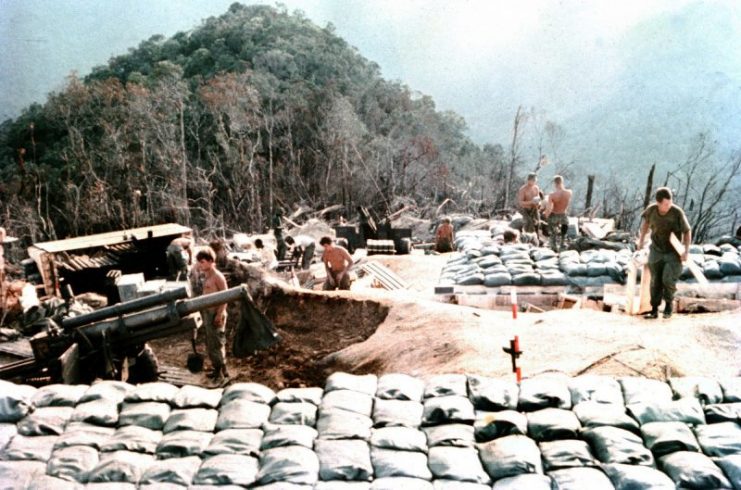
Serving as a crewman, Rogers pumped beehive rounds at an enemy that instantly filled gaps blasted in their formations from their reserves.
Once again, Rogers was struck by shrapnel. This time, he did not get up, but he was not out of the fight. He continued to direct the defense and call for air support. As the sun rose and light filtered down into the battlefield, the Air Force was able to bring attack jets to the fight, and army aviation brought their helicopter gunships.
The last of the NVA were beaten back. While only 27 Americans were confirmed as killed, the pilots reported seeing hundreds of bodies outside the wire.
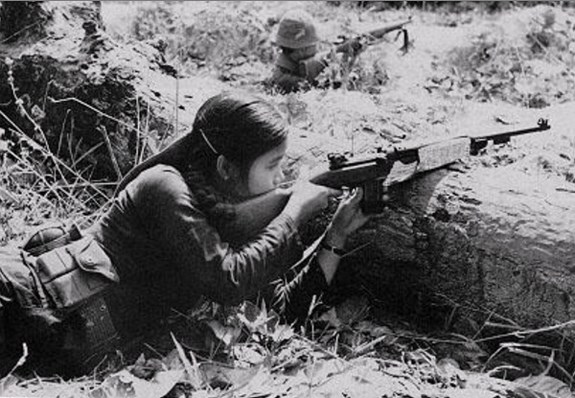
The enemy blended back into the jungle, their “trick” having failed spectacularly during the four-hour attack.
Read another story from us: “Totally Fearless” Vietnam Hero Finally Awarded the Medal of Honor
LTC Rogers received the Medal of Honor in 1970 for his actions Halloween night, 1968. He eventually retired as the Major General in command of VII Corps Artillery in 1984.
At the time of his early death in 1990, he was an ordained Baptist minister in Germany. Having led his soldiers through hell, he went on to try and lead them to heaven.
